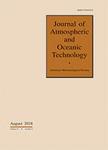版权所有:内蒙古大学图书馆 技术提供:维普资讯• 智图
内蒙古自治区呼和浩特市赛罕区大学西街235号 邮编: 010021

作者机构:Peoples Liberat Army Univ Sci & Technol Coll Meteorol & Oceanog 60 Shuanglong St Nanjing 211101 Jiangsu Peoples R China
出 版 物:《JOURNAL OF ATMOSPHERIC AND OCEANIC TECHNOLOGY》 (大气与海洋技术杂志)
年 卷 期:2016年第33卷第6期
页 面:1123-1134页
核心收录:
学科分类:07[理学] 070601[理学-气象学] 0706[理学-大气科学] 0824[工学-船舶与海洋工程]
基 金:National Natural Science Foundation of China [41375029 41505016 41575028]
主 题:Geographic location/entity Asia Physical Meteorology and Climatology Radiances Observational techniques and algorithms Algorithms Remote sensing Satellite observations Mathematical and statistical techniques Statistics
摘 要:Many quantitative uses of the nighttime imagery provided by low-light sensors, such as the day-night band (DNB) on board the Suomi-National Polar-Orbiting Partnership (SNPP), have emerged recently. Owing to the low nighttime radiance, low-light calibration at night must be investigated in detail. Traditional vicarious calibration methods are based on some targets with nearly invariant surface properties under lunar illumination. However, the relatively stable light emissions may also be used to realize the radiometric calibration under low light. This paper presents a low-light calibration method based on bridge lights, and Visible Infrared Imaging Radiometer Suite (VIIRS) DNB data are used to assess the proposed method. A comparison of DNB high-gain-stage (HGS) radiances over a 2-yr period from August 2012 to July 2014 demonstrates that the predictions are consistent with the observations, and the agreement between the predictions and the observations is on the order of -2.9% with an uncertainty of 9.3% (1 sigma) for the Hangzhou Bay Bridge and -3.9% with an uncertainty of 7.2% (1 sigma) for the Donghai Bridge. Such a calibration method based on stable light emissions has a wide application prospect for the calibration of low-light sensors at night.